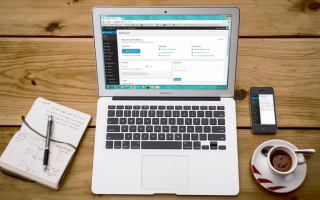In this era of information explosion, every website is like an isolated island in a vast ocean, yearning to be discovered by every corner of the world. As someone who has spent years navigating the SEO field, I deeply understand that in this digital ocean, there exists an unseen "explorer"—the Google Spider. It silently traverses websites, determining which content can rise to the surface and be seen by the masses.

I. Google Spider: The Invisible Judge of Websites
1. The Origins of the Google Spider
The Google Spider, officially known as Googlebot, is an automated program designed by Google to crawl and index web content. Following specific algorithms and rules, it autonomously visits websites, collects page information, and provides data support for Google’s search index. In simple terms, it acts as the eyes and ears of Google’s search engine, helping it understand every corner of the internet.
2. Why Does the Spider’s Visit Matter?
Imagine your website as a treasure island—the Google Spider is the explorer searching for that treasure. Each visit signifies an opportunity for your website to be discovered by more users. Pages crawled by Googlebot stand a chance to appear in search results, driving valuable traffic and exposure. For website owners, understanding and welcoming Googlebot’s visits is a critical step to enhancing visibility and influence.
3. How to Build a Good Relationship with the Spider
To foster a positive relationship with Googlebot, ensure your website has a clear structure, high-quality content, and frequent updates. Think of it as preparing a detailed map and abundant treasures for the explorer, making it easy for the spider to find and appreciate your site. Additionally, proper use of robots.txt, correct meta tags, and avoiding search-engine-unfriendly techniques (e.g., cloaking or hidden text) are essential rules for coexisting with Googlebot.
II. In-Depth Analysis: Strategies for Engaging Googlebot
1. Optimize Site Structure to Welcome the Spider
A clean, intuitive, and navigable website structure is key to attracting Googlebot. Optimize URL structures, implement breadcrumb navigation, and ensure internal linking connects all pages. This improves crawlability, allowing Googlebot to effortlessly traverse your site and index more valuable content.
2. Content Is King, Quality Reigns Supreme
In SEO, content remains king. Original, high-quality content that aligns with user intent not only captivates visitors but also wins Googlebot’s favor. Regularly update your content to maintain relevance and accuracy, which boosts search rankings. Strategic use of keywords and tags also helps Googlebot better understand your page’s focus.
3. Technical Optimization for a Better Spider Experience
Technical aspects significantly impact Googlebot’s crawling efficiency. Improve page load speed, optimize image formats/sizes, and ensure cross-device/browser compatibility. Regularly audit and fix broken links (404 errors) to maintain site health and build search engine trust.
4. Proactive Submission & Log Analysis: Track Spider Activity
Use Google Search Console to submit new pages and analyze crawl logs. Proactive submissions accelerate crawling, while log analysis reveals issues (e.g., crawl errors) so you can refine your site’s performance.
III. Frequently Asked Questions
Q1: How to Check If Googlebot Is Crawling My Site?
A:Monitor server logs or use Google Search Console’s Crawl Diagnostics Tool. Frequent entries labeled "Googlebot" in logs or successful crawl reports confirm active indexing.
Q2: My Site Is Rarely Crawled by Googlebot. What Should I Do?
A:Boost crawl frequency by updating content, optimizing site structure, submitting new pages, and avoiding SEO-unfriendly practices (e.g., duplicate content).
Q3: Why Does Googlebot Fail to Crawl My Pages?
A:Common causes include server instability, slow loading, broken links, or misconfigured robots.txt. Regularly audit your site to resolve these issues.
Q4: How to Improve My Site’s Google Ranking?
A:Focus on technical SEO, content quality, backlink building, and social media engagement. Stay updated on Google’s algorithm changes and adapt your strategy. Remember: SEO is a marathon, not a sprint.
Googlebot acts as a critical ally in your website’s journey to visibility. By understanding its behavior, optimizing your site’s structure and content, and leveraging tools like Google Search Console, you can enhance search rankings, attract organic traffic, and thrive in the competitive digital landscape.
Tags: Google Spider








No comments yet, come on and post~